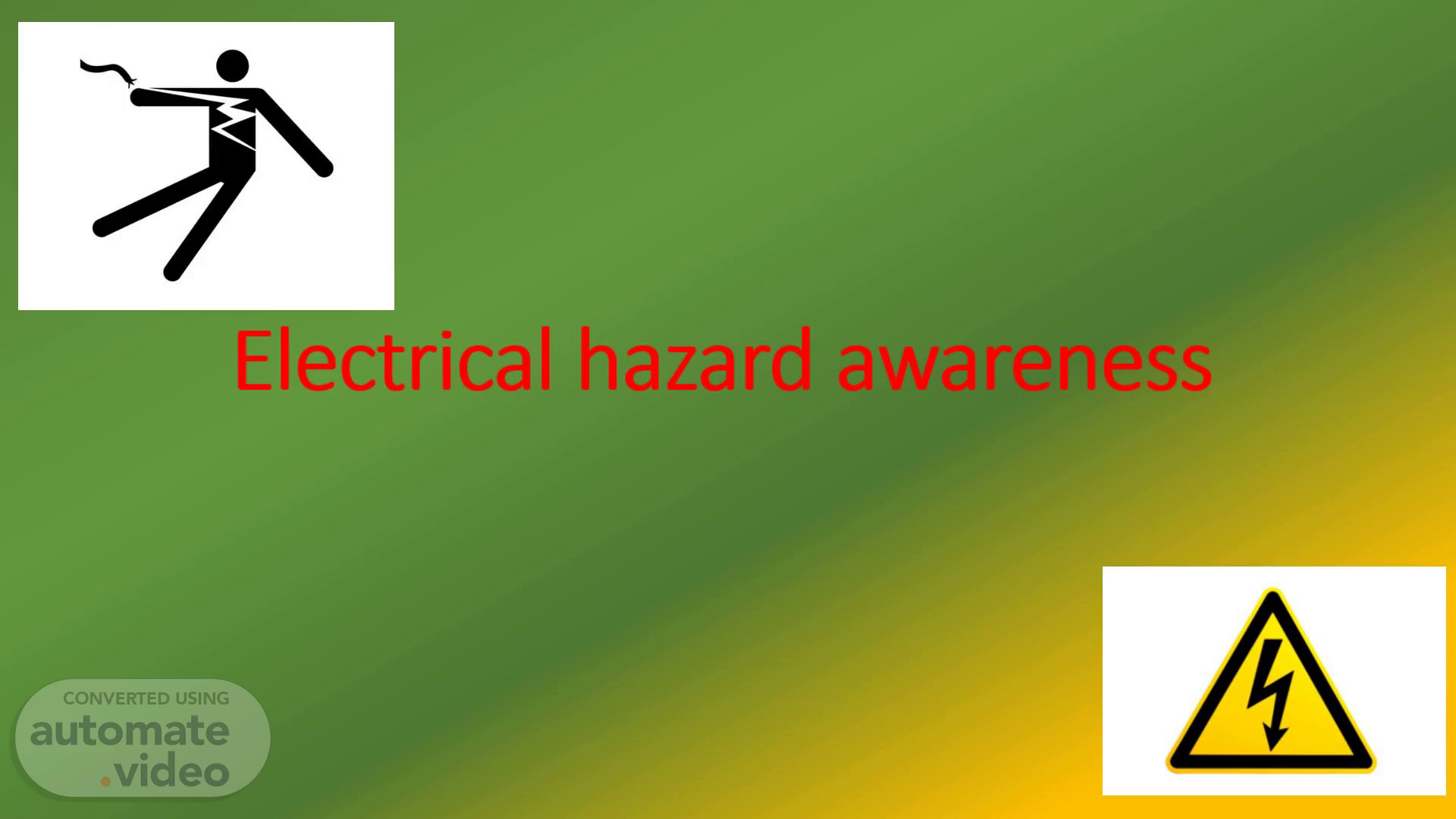
Electrical hazard awareness
Scene 1 (0s)
[Audio] Electrical hazard awareness. Electrical hazard awareness.
Scene 2 (4s)
[Audio] What does hazard mean? Hazard means: any potential or actual threat to the wellbeing of people, machinery or environment Electrical hazard safety means: taking precautions to identify and control electrical hazards.
Scene 3 (21s)
[Audio] Why know about it? Because failing to take the necessary precautions can lead to: injury or death fire or property damage.
Scene 4 (32s)
[Audio] What are the safety priorities? Electrical hazards exist in almost every workplace. Common causes of electrocution are: making contact with overhead wires undertaking maintenance on live equipment working with damaged electrical equipment, such as extension leads, plugs and sockets using equipment affected by rain or water ingress.
Scene 5 (54s)
undefined. [Audio] .
Scene 6 (1m 36s)
[Audio] How do you respond to electrical incidents? If you come across a person receiving an electric shock: If possible, disconnect the electrical supply (switch?) Assess the situation – never put yourself at risk Take precautions to protect yourself and anyone else in the vicinity Apply the first aid principles (e.g. DRSABCD) Assess the injuries and move the casualty to a safe area if required Administer first aid if trained Seek urgent medical attention.
Scene 7 (2m 8s)
undefined. [Audio] .
Scene 8 (4m 1s)
[Audio] What are the types of injuries? Burns Shocks Falls.
Scene 9 (4m 12s)
[Audio] Can you protect yourself from electricity? Don’t wear metal objects Turn power off Wear appropriate clothing Don’t touch live parts Don’t install or repair electrical equipment Use qualified personnel Clean and dry leads and plugs before use Use PPE.
Scene 10 (4m 29s)
[Audio] The key messages The risk of electric shock from correctly installed and maintained power sources is negligible, provided that sensible precautions are taken by the operator and correct work procedures are followed Ensure that the right person is carrying out electrical work. Electricity is essential but, improperly used, it can be DEADLY! To STAY ALIVE, you have to STAY ALERT.